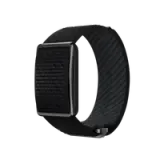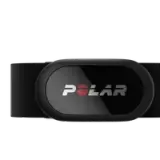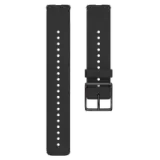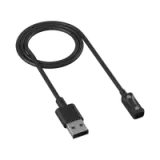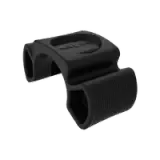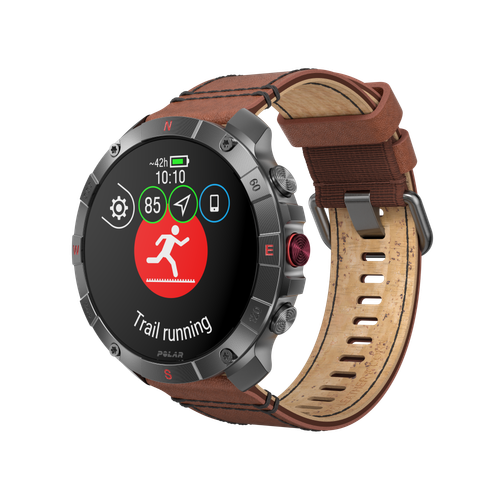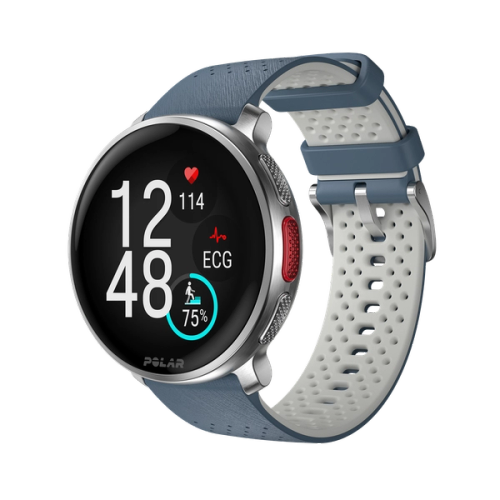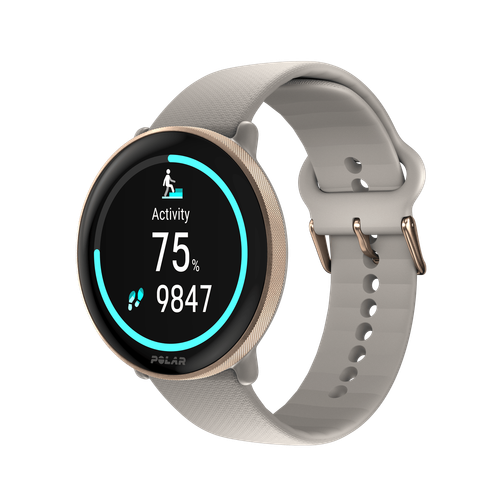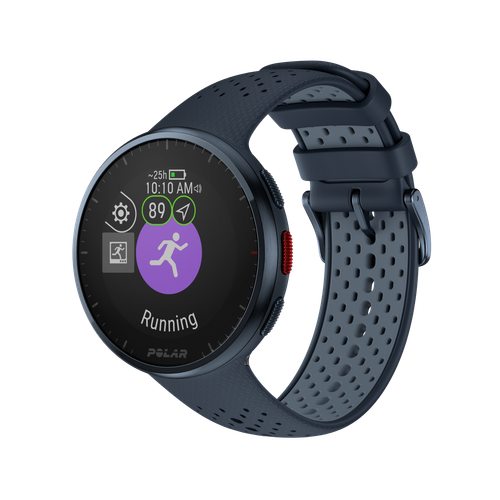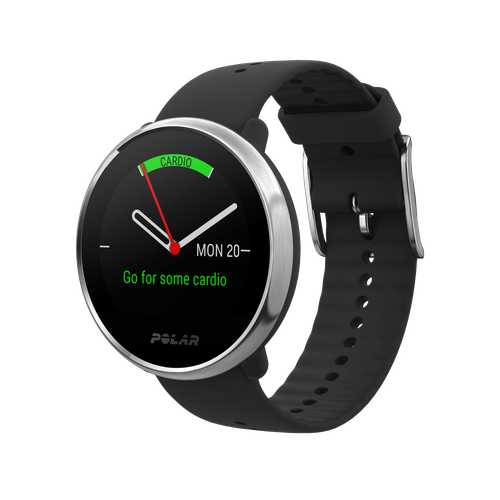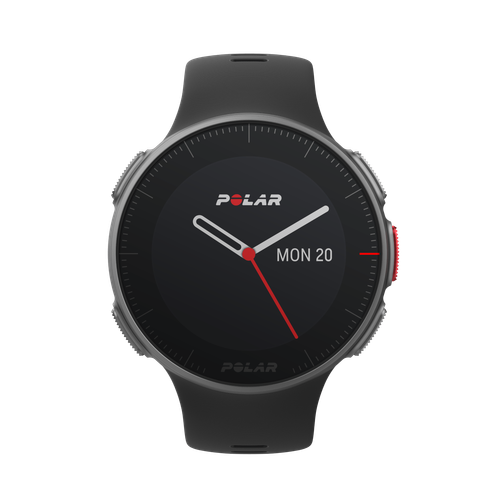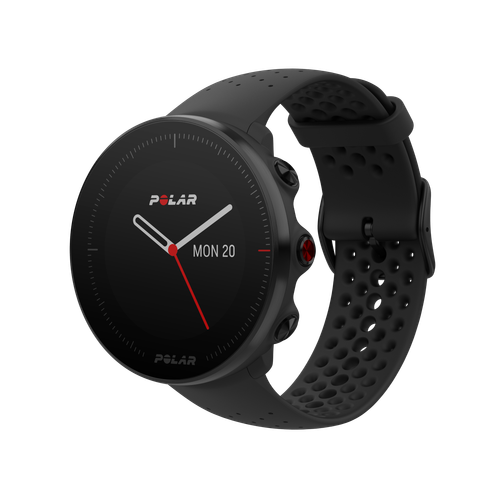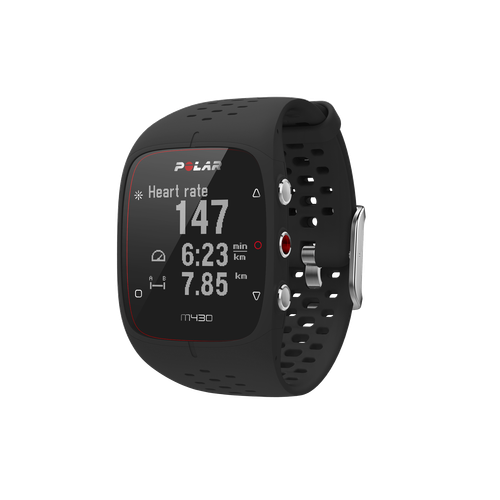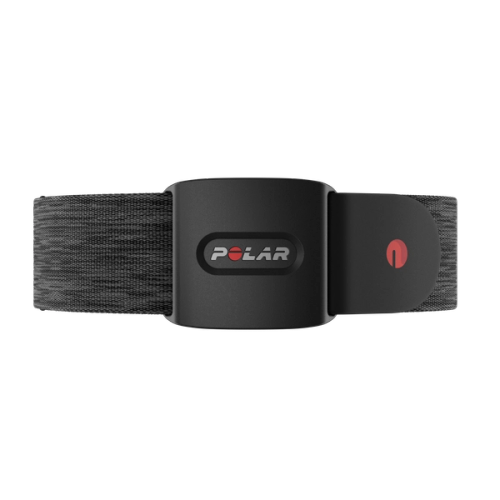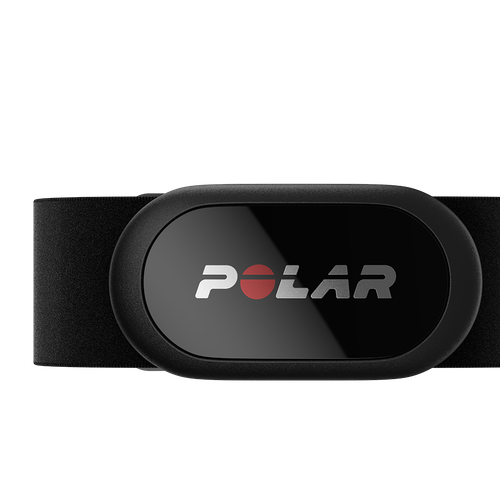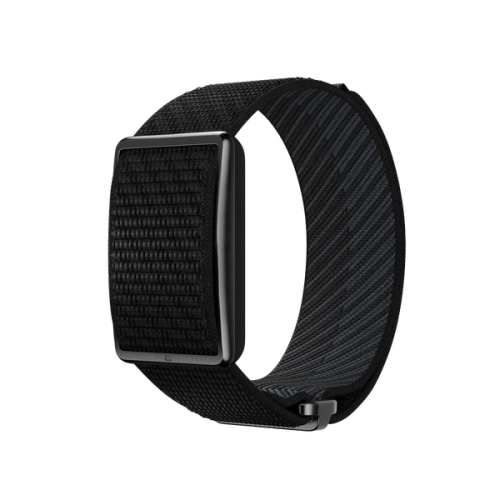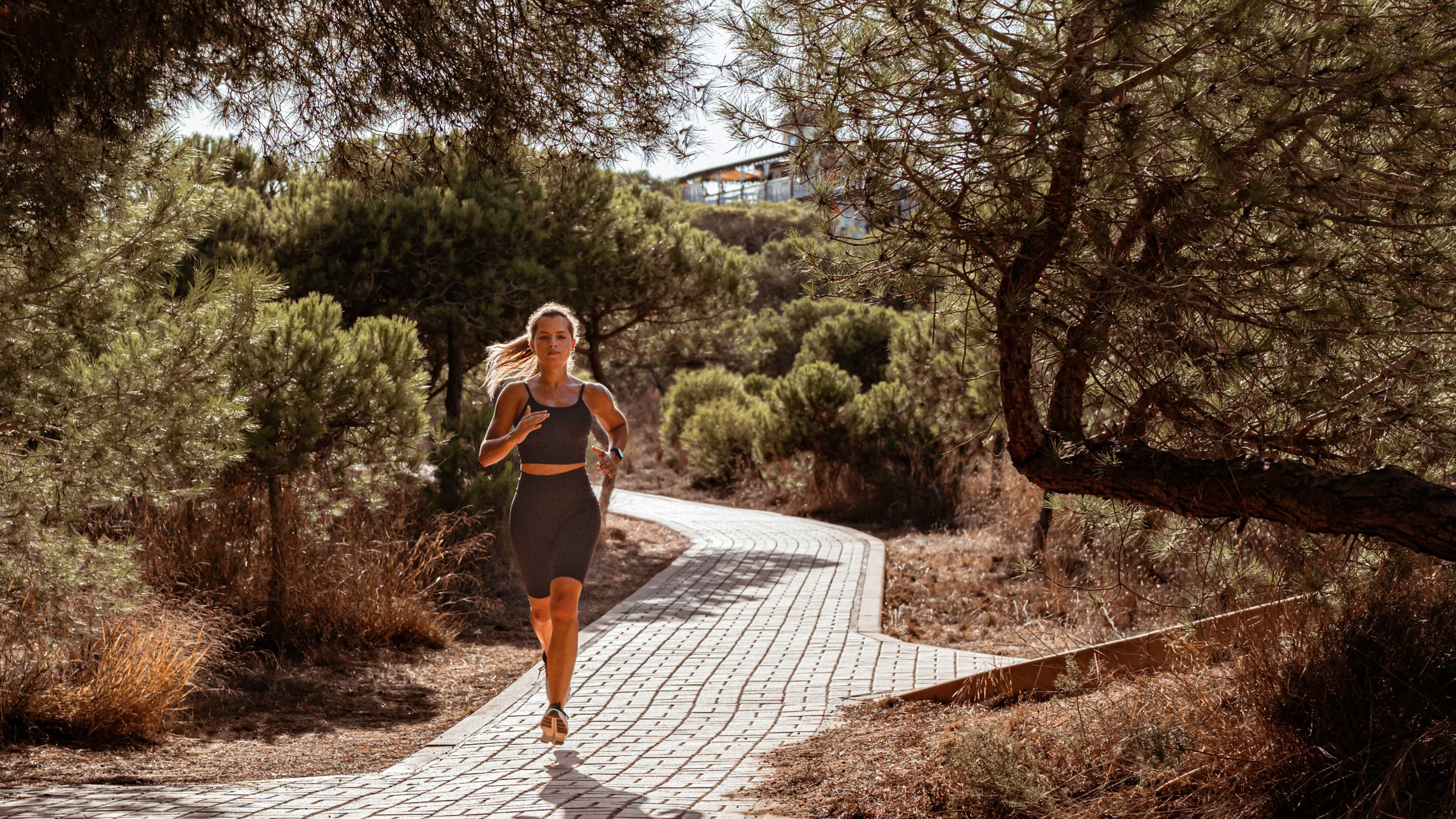Running in the heat is something to endure, not embrace. But emerging research is beginning to shift that narrative. While high temperatures undeniably add stress to the body, recent studies suggest that heat training, when approached carefully, can offer surprising benefits, from improved endurance to increased oxygen-carrying capacity.
Summer brings plenty to look forward to: longer, brighter days, pleasant temperatures, and more chances to enjoy the outdoors. With most of us enjoying a bit more free time, it’s great season to get moving, breathe in fresh air, and make the most of outdoor exercise. That is, until the heat starts to push the limits.
Exercising in the heat, particularly during endurance sports such as running, can be especially stressful when the heat index rises above 26 degrees Celsius (80 degrees Fahrenheit). The combination of environmental heat stress and exercise increases physiological strain, leading to immediate and familiar effects: elevated heart rate and core temperature, increased oxygen uptake, muscles that feel weak and unsteady (“jelly legs”), and a general sense that every step requires more energy.
Other effects of exercising in the heat are less noticeable but equally important. The body tends to burn through glycogen stores more quickly, as the added physiological stress push energy demands higher, resulting also increased perceived effort. At the same time, heavy sweating impacts electrolytes like sodium and potassium, which regulate the body’s hydration balance, increasing the risk of muscle cramps, nausea, and even confusion. As a result of these combined factors, the time it takes to reach exhaustion is often significantly reduced, making heat a quiet but powerful limiter of endurance performance.
The result of these physiological effects is a noticeable drop in aerobic performance when running in the heat. What might normally feel like a slow jog can turn into a race-day effort.
Other effects of exercising in the heat are less noticeable but equally important. The body tends to burn through glycogen stores more quickly, as the added physiological stress push energy demands higher, resulting also increased perceived effort. At the same time, heavy sweating impacts electrolytes like sodium and potassium, which regulate the body’s hydration balance, increasing the risk of muscle cramps, nausea, and even confusion.
The good news is that the human body is remarkably capable of adapting to heat. High temperatures are a challenge, and one that needs to be approached with care. But with the right strategy and gradual exposure, heat can also become a powerful stimulus for improvement. Like training at altitude or pushing through intense sessions, exercising in the heat places unique stress on the body—stress that, over time, can drive meaningful adaptations. These changes can enhance endurance, boost performance, and contribute to overall fitness gains, not only in heat, but also in less extreme conditions.
A 2015 review study published in the Scandinavian Journal of Medicine & Science in Sports highlights several key adaptations to heat through different acclimation protocols: more efficient sweating and retention of electrolytes, better skin blood flow, lower core temperatures, reduced cardiovascular strain, improved fluid regulation, metabolic shifts that help the body perform as it would in cooler conditions, and stronger protection against heat induced stress reactions at the cellular level. The extent of these adaptations depends on factors such as how intense, long, and frequent the heat exposures are, as well as the specific environmental conditions—whether the heat is dry or humid.
While the physiological adaptations to heat have been known for some time, more recent research has taken a step further by examining the performance effects of heat training. Researchers are exploring whether different heat acclimation strategies—such as passive methods like saunas or hot baths, heat suit training, and exercising in hot environments—can lead to measurable improvements in performance.
In 2022, the Scandinavian Journal of Medicine & Science in Sports published a study investigating how heat suit training influences hemoglobin mass in elite cross-country skiers. Participants trained five days per week over the course of five weeks. Some wore heat suits as part of the intervention, while the others formed the control group and trained under normal conditions. The results were significant: the heat training group showed an average increase of 30 grams in hemoglobin mass and a 157 ml increase in red blood cell volume compared to the control group. These findings suggest that heat training may enhance oxygen-carrying capacity, although improvements in actual endurance performance are still unclear.
This study appears to support findings from an earlier study published in Experimental Physiology in 2020. In that research, 23 elite male cyclists were divided into two groups. The heat group added one hour of low-intensity training in a 38°C (100°F) chamber set at 60% humidity, five times per week. The results were striking: the heat group experienced an average increase of 42 grams in hemoglobin mass, compared to just 6 grams in the control group.
Heat training may offer more than just acclimation to high temperatures—it could also improve performance in cooler conditions. A 2021 study by Maunder et al. tested this idea by having 17 trained male athletes complete three weeks of endurance training in either a hot environment (33 °C / 91 °F) or a cooler one (18 °C / 64 °F). Training intensity was matched between groups based on heart rate, ensuring comparable cardiovascular demand. Both groups also completed a weekly high-intensity interval session performed at maximal effort.
After the three-week intervention, the findings indicated that the heat training group experienced a more distinct increase in 30-minute time-trial power and in citrate synthase activity, a key indicator of mitochondrial function. These improvements were significantly greater than those observed in the temperate training group. Researchers also highlighted that planning training based on heart rate appears to be an effective method for managing intensity in hot conditions.
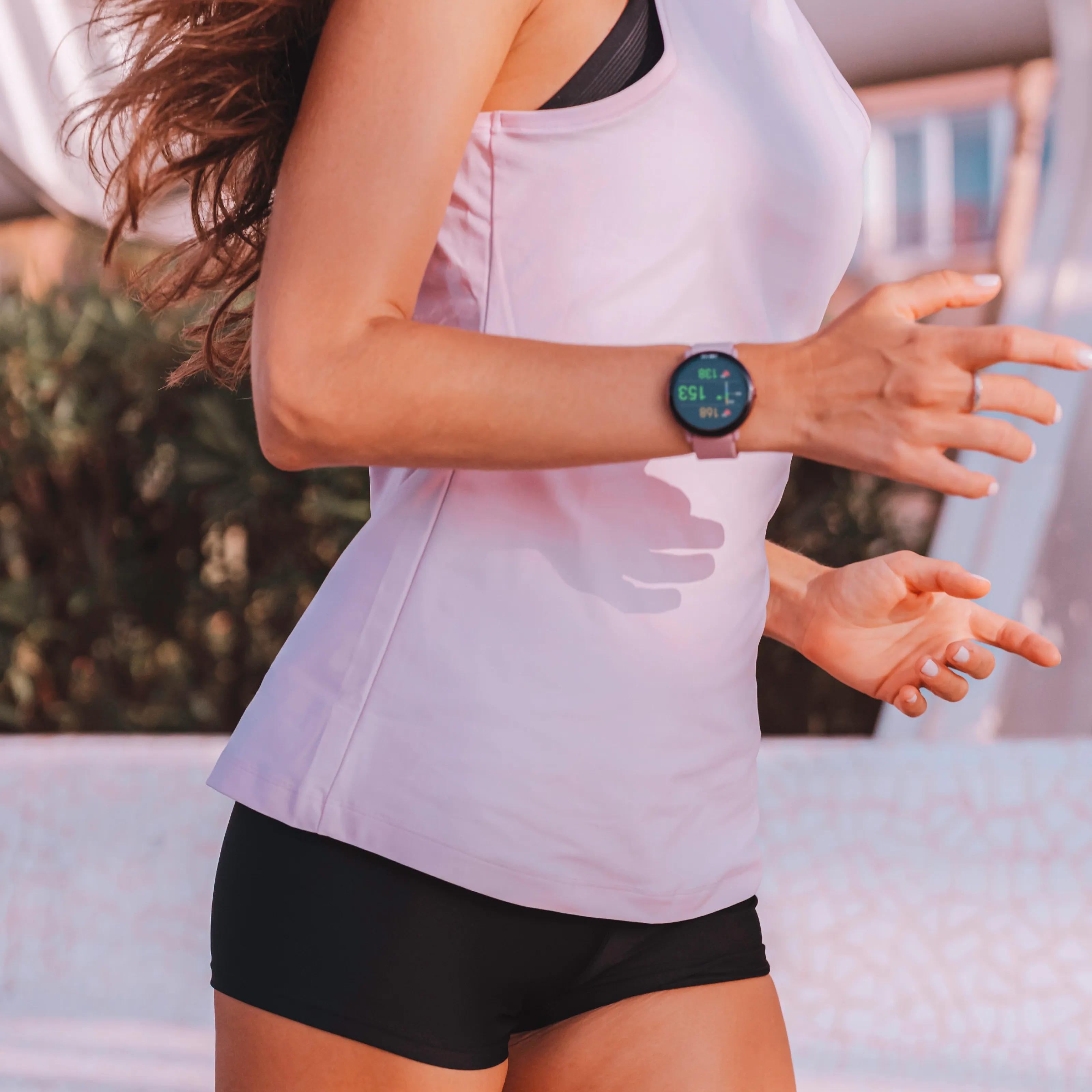
Safety considerations
While many questions remain and further research is needed, it’s becoming increasingly clear that heat training offers some impressive benefits. That said, heat is a powerful stressor—and pushing too hard can quickly become dangerous.
Think of the human body like a car engine: it generates heat with movement, and the harder it works, the hotter it gets. If that heat isn’t managed, systems can begin to shut down. That’s why it’s crucial to monitor your body’s signals when training in high temperatures. Keeping an eye on your heart rate can help; if it’s significantly higher than usual for your pace, it’s a strong indicator that it’s time to ease off and let your body cool down.
Other warning signs of overheating include dizziness, nausea, headache, confusion, and an unusual lack of sweating. These symptoms shouldn’t be ignored; they’re the body’s way of saying it needs a break before things get serious.
Slow, gradual adaptation
Running in the heat is challenging, but that doesn’t mean quality training is off the table. With thoughtful planning and a few key safety precautions, it’s not only possible to enjoy running in hot conditions—it can also be an opportunity to boost your fitness.
The first step is to ease into it. Your body needs several days—sometimes up to two weeks—to begin adapting to the heat. Next, adjust your pace. Heat puts extra strain on your cardiovascular system, so running at an easy pace will often feel much harder than usual.
Because heat generation rises with increasing intensity, one of the best ways to manage running in hot weather is to slow down or increase recovery time during intervals to lower your average pace. Heat also drives up heart rate—first, because more blood is needed to move heat from your core to your skin, and second, because sweat loss reduces blood volume, requiring your heart to beat faster. That’s why pace becomes an unreliable measure of effort in the heat. Heart rate is a better guide. If you usually run a 10K at 5:15 min/km with an average heart rate of 140 bpm, it’s smarter to maintain that heart rate on a hot day, even if your pace is slower.
If you’re still aiming to include high intensity sessions in your training, schedule them for cooler parts of the day and add longer rests between intervals to reduce the risk of overheating. On the other hand, easy runs can be done when it’s warmer, using them as controlled opportunities to build heat tolerance.
Finally, rely on common sense and proven strategies to stay safe in the heat. Hydration is key—before, during, and after your run. And remember, it’s not just about water. Replacing lost electrolytes is just as important, since sweat carries away essential minerals like sodium and potassium. Especially in longer duration training, look for drinks that contain a balanced mix of electrolytes to help maintain performance and prevent issues like cramps or fatigue. Don’t forget to protect yourself: apply sunscreen, wear sunglasses to shield your eyes, and choose a lightweight hat to keep the sun off your head. These small steps go a long way in making hot-weather running safer and more comfortable.
According to a 2015 review published in the British Journal of Sports Medicine, a minimum of one week—and ideally two weeks—of heat exposure is recommended to achieve meaningful acclimatization.
For athletes preparing to compete in hot conditions, current research offers clear guidance. According to a 2015 review published in the British Journal of Sports Medicine, a minimum of one week—and ideally two weeks—of heat exposure is recommended to achieve meaningful acclimatization. It is also essential to begin each session in a well-hydrated state and to minimize fluid losses by rehydrating appropriately during exercise. In addition, athletes can benefit from targeted countermeasures, such as pre-cooling strategies or cooling aids during training and competition. With careful planning, these strategies can help unlock the performance advantages of heat training while keeping safety a top priority.
References
- Périard, J. D., Racinais, S., & Sawka, M. N. (2015). Adaptations and mechanisms of human heat acclimation: Applications for competitive athletes and sports. Scandinavian Journal of Medicine & Science in Sports, 25(Suppl. 1), 20–38. https://doi.org/10.1111/sms.12408
- Périard, J. D., Eijsvogels, T. M. H., & Daanen, H. A. M. (2021). Exercise under heat stress: Thermoregulation, hydration, performance implications, and mitigation strategies. Physiological Reviews, 101(4), 1873–1979. https://doi.org/10.1152/physrev.00038.2020
- Rønnestad, B. R., Hamarsland, H., Hansen, J., Holen, E., Montero, D., Whist, J. E., & Lundby, C. (2020). Five weeks of heat training increases haemoglobin mass in elite cyclists. Experimental Physiology, 106(1), 316–327. https://doi.org/10.1113/EP088544
- Rønnestad, B. R., Lid, O. M., Hansen, J., Hamarsland, H., Mølmen, K. S., Nygaard, H., Ellefsen, S., Hammarström, D., & Lundby, C. (2022). Heat suit training increases hemoglobin mass in elite cross‑country skiers. Scandinavian Journal of Medicine & Science in Sports, 32(7), 1089–1098. https://doi.org/10.1111/sms.14156
- Maunder, E., Wallis, G. A., & Poole, R. (2021). Temperate performance and metabolic adaptations following endurance training performed under environmental heat stress. European Journal of Applied Physiology, 121(7), 2001–2014. https://doi.org/10.1007/s00421-021-04683-4
- Racinais, S., Alonso, J. M., Coutts, A. J., Flouris, A. D., Girard, O., González‑Alonso, J., Hausswirth, C., Jay, O., Lee, J. K. W., Mitchell, N., Nassis, G. P., Nybo, L., Pluim, B. M., Roelands, B., Sawka, M. N., Wingo, J. W., & Périard, J. D. (2015). Consensus recommendations on training and competing in the heat. British Journal of Sports Medicine, 49(18), 1164–1174. https://doi.org/10.1136/bjsports-2015-094915
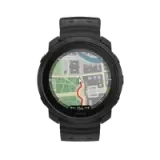 Polar Vantage M3
Polar Vantage M3
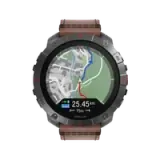 Polar Grit X2 Pro Titan
Polar Grit X2 Pro Titan
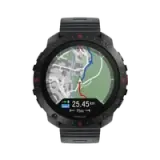 Polar Grit X2 Pro
Polar Grit X2 Pro
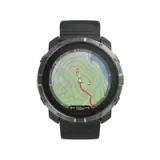 Polar Grit X2
New
Polar Grit X2
New
 Polar Vantage V3
Polar Vantage V3
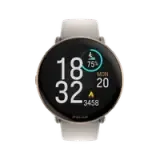 Polar Ignite 3
Polar Ignite 3
 Polar Ignite 3 Braided Yarn
Polar Ignite 3 Braided Yarn
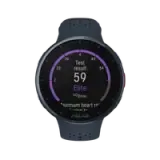 Polar Pacer Pro
Polar Pacer Pro
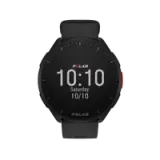 Polar Pacer
Polar Pacer
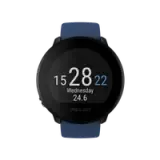 Polar Unite
Grit X Series
Vantage Series
Pacer Series
Ignite Series
Polar Unite
Grit X Series
Vantage Series
Pacer Series
Ignite Series
